Finding the perfect guanciale substitute can feel like a treasure hunt in your own kitchen.
Truth bomb: most of us don’t have this Italian charcuterie staple just lying around.
And that’s totally okay. We’ve got your back with five rock-star alternatives that’ll keep your pasta carbonara or amatriciana on point.
Ever tried pancetta? How about a good old slice of bacon?
Each brings its unique twist to the table, keeping your dishes delicious without a trip to a specialty store.
Get ready to have your mind blown with our top picks. Transform your meals from good to gourmet—no fancy ingredients required.
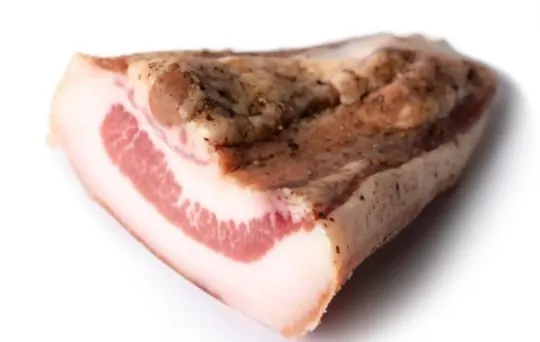
The 5 Best Substitutes for Guanciale
If you’re looking for something to substitute guanciale in your favorite dishes, here are five of the best options:
1 – Pancetta
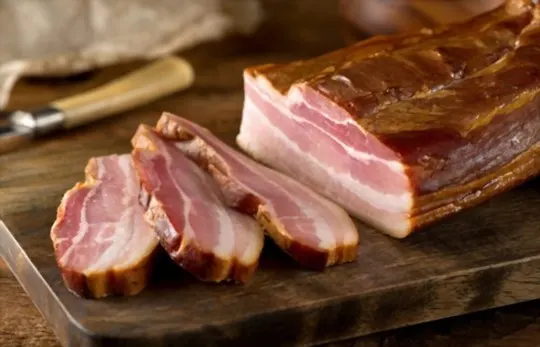
Pancetta is an Italian bacon made from pork belly, salt, black pepper, and spices.
It is cured meat, basically the same as regular bacon but not smoked.
Pancetta has a delicate yet distinct flavor that enhances anything it’s added to.
With its chewy texture and salty punch, pancetta lends uniqueness to any dish it’s featured in.
Whereas regular bacon is smoky and has a rich aroma, pancetta has subtle notes of nutmeg or cloves and goes particularly well in white sauces or lightly sautéed dishes.
It can even be boiled with pasta or risotto for an extra bit of decadence.
If you’re looking for an alternative to guanciale, pancetta works great as a substitute due to the similarities in texture and fat content.
Try slicing it thinly and adding it as a garnish for pizza or grinding it up as part of a dry rub for roasts.
2 – Bacon
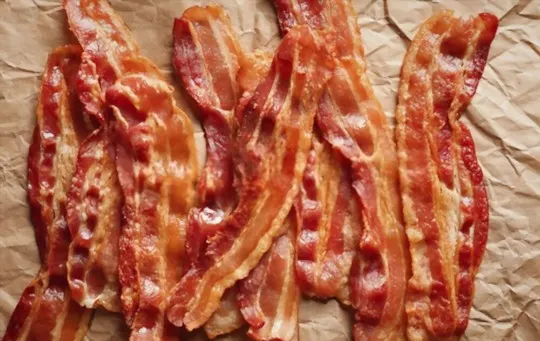
Bacon is a tried and true favorite among foodies – it can be cooked up in many different ways, from fried strips to baked pieces.
It consists of a salted pork belly that is cured, smoked, and then sliced – the smoke adds additional flavor and brings out the pork’s natural sweetness.
When crispy, bacon has a chewy texture that almost begs to be savored; when cooked for an extended period of time, it will become more tender.
The flavor is complex but slightly salty, with a hint of smokiness.
For those looking to substitute guanciale in recipes such as carbonara without any sacrifice of flavor or texture, bacon serves as a great alternative.
While it might have less fat than guanciale, bacon is surprisingly versatile and can still provide deep flavors that really make a dish unique.
3 – Prosciutto
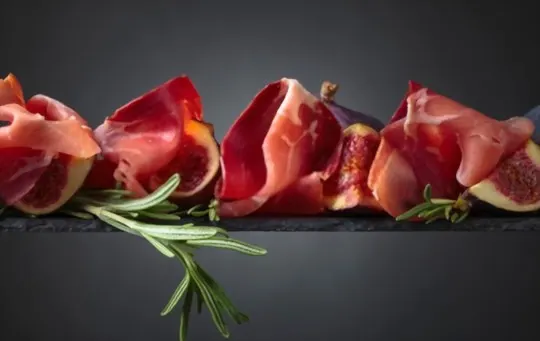
Prosciutto is an Italian-style cured ham that is sliced very thin and served uncooked.
It has a delicate and complex flavor with a hint of sweetness, which makes it a great addition to many dishes.
The texture can range from chewy to slightly crispy, and the flavor results from being cured with salt and air-dried.
As a result, prosciutto has a unique aroma that enhances its overall taste.
It also prevents it from spoiling once cut.
When substituting prosciutto for guanciale in recipes, it can be used interchangeably because they are both high-fat hams made using similar curing techniques.
However, because prosciutto is saltier than guanciale, less salt may be needed in the recipe.
4 – Lardo

Lardo is a traditional Italian cured meat product that is made from the back fat of a pig.
This type of cured meat is usually salt-cured, and it has been around for centuries, with recipes being recorded as far back as Roman times.
Lardo has a mild and salty taste, with an intense richness due to its fat content.
It’s smooth in texture, and it’s not noticeably gamey like some other types of salumi.
It can be used to replace guanciale in pasta dishes and risotto or shaved over salads for added flavor.
To do this, simply cut lardo into small cubes, and sauté them until the fat is rendered and they are golden brown on the edges.
Substituting lardo for guanciale will add just enough richness to keep your dish flavorful without being overpowering.
5 – Chorizo
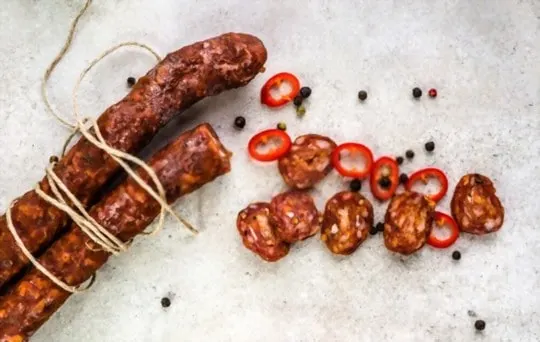
Chorizo is a delicious, spicy cured sausage originally hailing from Spain and Portugal.
This type of sausage comes in wide varieties: hard or soft; sweet or spicy; made from pork, beef, or even chicken.
Generally, chorizo has a slightly smoky flavor with subtle notes of heat and garlic.
It has a curing process similar to salami, resulting in a solid, dense texture that gives way to a melt-in-mouth finish.
Chorizo can be easily substituted for guanciale in any recipe, lending some extra punch to the dish.
By adding a few chunky peppers or tomatoes alongside your chorizo, you can create an entirely new taste sensation that your family and friends are sure to enjoy.

Leave a comment